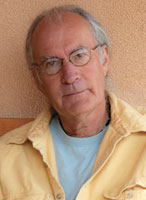Lighting Your Way
 In this issue we dive deep into auxiliary lighting waters with reviews, roundups, and tips on everything from studio to location strobes to on-camera flash to flash modifiers, those items that shape and add subtlety to what might otherwise be nothing more than a large blast of light. As you’ll see, lighting solutions are quite varied, and our task is to provide an overview of some of the latest available products as well as tips on setups and using them, something our tests always emphasize.
In this issue we dive deep into auxiliary lighting waters with reviews, roundups, and tips on everything from studio to location strobes to on-camera flash to flash modifiers, those items that shape and add subtlety to what might otherwise be nothing more than a large blast of light. As you’ll see, lighting solutions are quite varied, and our task is to provide an overview of some of the latest available products as well as tips on setups and using them, something our tests always emphasize.
We also explore the new world of LED lighting for still photographers. At first, this category was primarily aimed at pro video shooters, but it’s become a clear case of high-end pro gear adapted for the still photographer in both pro and amateur segments. There’s no doubt that there has been a proliferation of LEDs of late, ranging from large units for the studio pro to on-camera units for the D-SLR and CSC user who wants to see just what they get when the lights go on for both their still and video work. Some of our reviewers see LEDs as the lighting wave of the future, and an argument for that can certainly be made. Whether or not that’s the case is subject to debate, but what’s not is that we’ve seen a new generation of lighting options come our way.
While the attraction of LEDs is evident—less testing because, unlike flash, you immediately see how shadows and highlights fall—there’s a new language for many photographers who may not be familiar with the lingo that set and location videographers use daily in their work. That’s why we have included a rather extensive explanation and, if you will, a translation of measures such as CRI and lux to terms more familiar to still photography flash shooters. If we are going to be using or considering this gear it’s good to know how it will perform and just what to expect.
The arrival of LEDs and their adaptability to still photography coincides with the enhanced performance of cameras when shot at higher ISOs, something you’ll understand once you read Joe Farace’s test report and our breakdown of their output adapted to Guide Numbers, EVs, and how raising ISO enhances the distance these lights “cover” in the studio and the field. Joe provides “test strips” and a guide to making the translation that I think you will find interesting. When we embarked on this we knew that there was a certain degree of the “apples and oranges” effect at work, but in the end we realized that these new generation lights deserved our attention, and the methodology we arrived at is something we will rely on going forward.
This issue continues our dedication to and testing of lighting gear for all manner of photographer. When you step into the amazing world of lighting and light modification you’ll begin to see new creative doors open. At first it might seem intimidating, but as you become familiar with the gear and its use I think you’ll see just what it can do for you and your images. If you want to learn more check our archives at www.shutterbug.com and click on the Lighting Equipment link under Equipment Reviews and the Lighting link under Techniques. I think you’ll find material there that will provide information and inspiration to help you get the most out of your photography.

- Log in or register to post comments

































